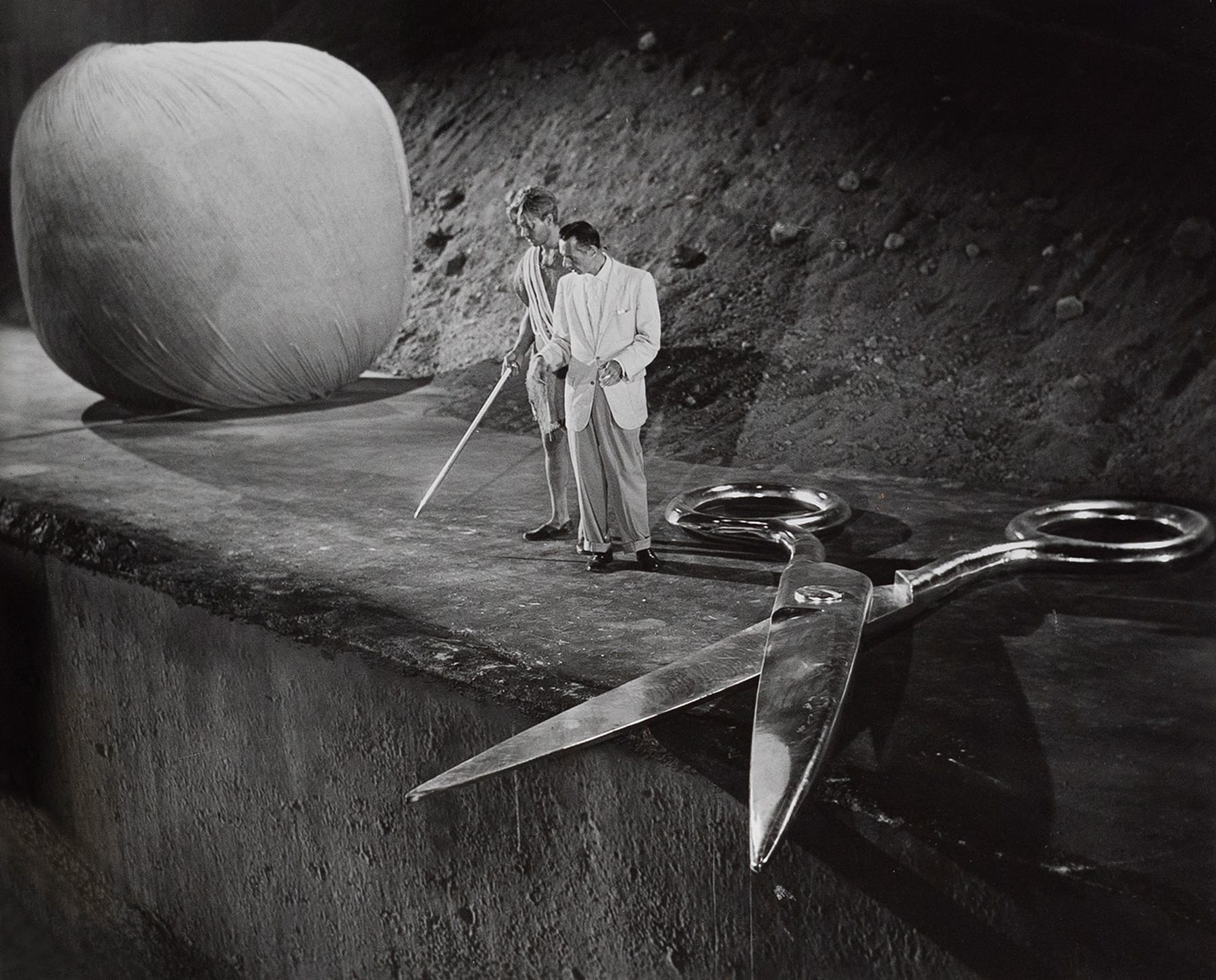RELATED ARTICLE
Godzilla: Poetry After the A-Bomb
By J. Hoberman
The Criterion Collection

The Incredible Shrinking Man: in 1957, the title alone instantly announced the film as part of a carnivalesque roll call of recent releases—The Beast from 20,000 Fathoms, Creature with the Atom Brain, Day the World Ended, It Conquered the World—an oral poetry of apocalyptic ballyhoo as much a part of the era’s soundtrack as rock and roll. In a moment when mushroom clouds billowed over test sites in Siberia and Nevada, entrepreneurs peddled fallout shelters, mothers worried about milk being tainted by radiation, and the future promised imminent satellite warfare, those films collapsed anxieties about rogue technology and global wipeout into roller-coaster fun. They coalesced gradually into a mélange of alien intelligences and dysfunctional computers, a menagerie of blobs, crawling eyes, oversize insects, and monsters spawned by atomic testing or misguided genetic experiments. Over time, they found a niche in the culture as their own parodies, a waxworks of sexual malaise, political paranoia, and midcentury American banality. Only occasionally—as in Forbidden Planet or Not of This Earth or I Married a Monster from Outer Space—did a tremor of the uncanny pierce the generic trappings like a message from a doomed planet, a hint of their original promise: direct contact with the fantastic, the unearthly, the incredible.
The most distinctive—and most truly fantastic—film of all was the one that rigorously pared away fantastic trappings. The Incredible Shrinking Man is a movie without space voyages or extraterrestrials or futuristic science or monsters (irradiated or otherwise), the sorts of elements that director Jack Arnold had deployed so ably in It Came from Outer Space (1953), Creature from the Black Lagoon (1954), and Tarantula (1955). Radiation there is, in the form of a white mist of undisclosed origin, but the person exposed to it does not morph into a destructive giant wreaking havoc on skyscrapers. The technology brought to bear—a panoply of state-of-the-art medical testing devices—proves unable to help. The monsters are a house cat and a spider, of normal dimensions and inclinations. Instead of panicked crowds fleeing from death rays, there is a crowd of gawkers and prying reporters trying to get a peek at the unfortunate Scott Carey: gawkers like the intended audience for most of the fifties science-fiction cycle to which the film belonged, who came, after all, in the expectation of seeing people crushed, melted, or vaporized by superhuman forces.
That Richard Matheson’s 1956 novel The Shrinking Man reached the screen as The Incredible Shrinking Man was a marketing decision. But in Matheson’s screenplay, the epithet is coined by exploitative tabloids. For his inexorably dwindling protagonist, at this point just tall enough to peer over a windowsill to see the crowd outside, the adjective channels his accumulated bitterness: “The incredible Scott Carey, the shrinking freak! . . . See how funny I am? The child that looks like a man!” The outburst registers strangely in a genre that rarely made much appeal to empathy. Yet what viewer could deny being one of the gawkers, amused (however uneasily) by the succession of visual surprises as the shrinking hero attempts to cope with grotesquely large armchairs and telephones and pencils, not to mention a wife who looms over him like a mother summoning her recalcitrant child to bed? The spectator’s relation to Scott can feel uncomfortable. Easier to take his plight as an occasion for extraordinary sight gags than as a premonition that we are all shrinking men and women in waiting.


